Not the patriarchal voice of the poet alone: A dialogue between Paal Bjelke Andersen (Norway), Marco Antonio Huerta (Mexico), and Robert Fitterman (United States)
21 November 2012
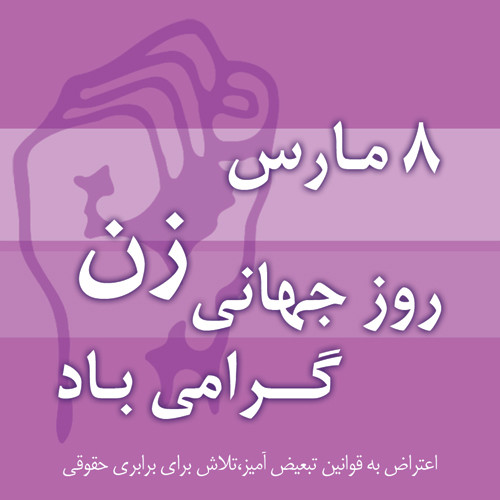
The following is an occassional dialogue composed for this occassion. Paal Bjelke Andersen, Marco Antonio Huerta, and Robert Fitterman entertain points of commonality and divergence. This is part four of the series.
Paal Bjelke Andersen Vanessa asked me to suggest someone to write to, I immediately thought of you two: Marco because of what you read when we meet in Paris—an elaboration of some accidents in Mexico's contemporary history—and where you are living, at the crossroad of the US and Mexico, in Tamaulipas; Robert because of your fascination for the surface of the American cities—a fascination I never have really understood until I went to Los Angeles in August and saw the eclectic series of private homes, one building looking as if the owner wanted to live in a house from a Brother Grimms fairytale, while the neighboring house looked like a miniature Mexican hacienda (at least to my Norwegian eyes). I the context of “Global conseptualism” thought it could be interesting to pair this with the place I come from: a social democratic, post-war optimistic, homogeneous Norway where the welfare state now is consequently reduced to a neo-liberal society.
It seems to me that you both explicitly use the historical, cultural, political, etc. context that you are living in as material for your writing. Of course this applies to every writer in one way or another, but I think that the geographical and historic origin of the material you use often seems more important that the procedures. This attention to the source material differs from some of the other conceptual writers, where the conversation is centered on form and procedure.
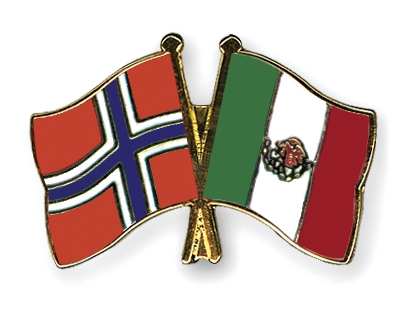
Marco Antonio Huerta A lot of questions kept hovering inside my head... most of these remaining as questions that are still thrown at conceptual practices in writing today. Such as: What will happen to the subject? Will the poet's subjectivity remain and, if so, how? Is it all just about copying and pasting? Conceptual Writing offers me a new way of addressing the situation in which we're currently set. I mean the local situation. A way to explore other subjectivities on the same (or not so same) topics. The nerve of it through other voices. Not the patriarchal voice of The Poet alone.
Every time I leave my country, as I go through customs and notice how language in airports tends to behave so neutral, so aseptic, so hypoallergenic, and at the same time so free from the news and gossip I’m used to receive when I’m home, I usually think about what happens to thinking when one comes to remember what it is being said about thinking globally…
I live a few miles south from the border of the United States of America. By now, I’m pretty used to crossing every now and then—to actually see how language shifts and (yet it stays the same) all the way from Tijuana/San Diego to Matamoros/Brownsville. How power is established and diminished. How power goes on and off in order to provide that some goods (people, weapons, drugs) can make it (either way) across the border. All of this can be seen through language. Politically-speaking, when thinking globally: On what grounds are you standing when you’re right on the border?
Then again, I was born, raised, and live in a Latin American country. Just by saying that, I’m saying too much. Then there’s the cliché permanently addressed via formal education and tradition: our people were overpowered and dominated since, let’s say, forever by other hegemonic cultures. But then again, it wasn’t. In which ways was Spain a cultural empire after 800 years of Arab domination? How hegemonic can the United States be when Spanish is a language that can hardly be called foreign over there anymore? These questions make global look not that fearful or omnipotent. Or anything new at all. I think it is mostly a game on time and place. About being in the right time and place.
Geographical and historic origin of the material we use is important. It is both evidence and a solemn attention as to the truth of a matter. It is proof of the circumstance we live in. It's been years now since my country has been faced with conflict, following one of the most violent periods throughout its modern history. And it is touching us all in a great number of ways. My bet is to enable the narrative of the moment—only as an enabler.
Robert Fitterman Globalization remains a vague term for me that mostly points to World Markets. I still prefer International, especially since there have been so few International art movements, and so little interest, post-war, in reaching out to International poetry communities. Italian Futurism set the table for this kind of international possibility, and most of the avant-garde conversations in the early part of the century found value in reaching across nations. But after World War II—when several of the dominate conversations in poetry moved to U.S. soil—the dialogue moved inward. Of course there are significant exceptions (especially with Concrete and Sound poetries, and the popularity of the Beats abroad), but in the U.S. one could easily characterize these decades as 50 years of avant-garde nationalism in poetry. In contrast, during this same period, music, film and visual art—especially Conceptual Art and Performance Art—all have had very vibrant conversations internationally. It seems to me that Conceptual Poetry today has a distinct International agenda, as evidenced by conferences, publications, friendships, etc. (i.e. this project). I wouldn’t be too quick to creditlobalism (we all have H &M stores and Mac Books) for this community building. I am more inclined to think that a generation of writers arrived at similar interests via a response to an information age… inundation, inventory, open-source culture via the Internet.
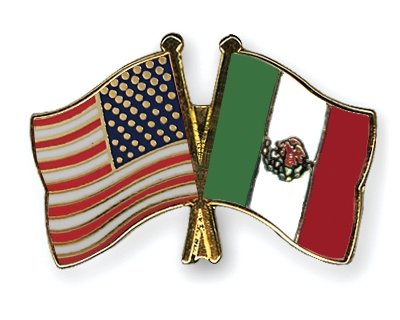
Paal Bjelke Andersen I agree that the term "global" could be misleading; this is about an international exchange, as in "involving authors from several countries and languages." However, I believe that the word "exchange" is more important than "international" here, in the sense that this has to do with more than the concept, such as the social and historical context of the textual material, which in one sense or another has to be legible for us to understand what these conceptual texts actually do, how they act.
Robert Fitterman Historically and aesthetically, Conceptual Poetry is engaged with and indebted to non-US poetry movements, such as sound and concrete poetries... movements that were more vital outside of the US. But the other part of this is that the shift from close reading to conceptual thinking invites a global community. I could engage with your texts even in their native languages, if you can describe for me the conceptual strategy that drives the work.
Paal Bjelke Andersen There is no doubt that the international impact of the conceptual poetry and the concrete poetry, Gomringer, the Campos brothers, share many of the same reasons. The early concrete poetry attempted to create poems that could be viewed as universal signs (today this strategy is common knowledge, Just do It, even though this comparison of course does not hold completely. The concrete poets had a much more developed sense of the semantic complexity of the text than today's copywriters in the advertising agencies, or most of the visual artists who work with text), while the concept requires no translation in the traditional sense, it is enough to explain what kind of material is used and at and how it is treated. But in contrast to the concrete poetry, I find much of the (to me most interesting) conceptual poetry as more based on the social materiality of the specific language. It is not about creating single signs, but complex sign structures that exceed the apparently translatable concept, which in many ways is just a remediation of the hermetic poem as long as the social aspects of language are not taken into account. The question is, therefore, whether we are facing a translation problem that is not really different from any other poem: how to make what is effective in this text legible to a reader who does not share the same language, the same culture and the same history?
Robert Fitterman Returning, then, to Paal’s earlier note about the genesis of this project and his interest in the materials that Marco and I might use, I would say that the material and method are one. Even though I do tend to use source material that is charged with socio-political content, I would argue that the Conceptual Poetry strategies employed by most of the writers in this community, speak to the same issues (via the commitment to how they strategize the writing and for which audience) even if political content is not an explicit feature of the work.
Here’s an example: Steve Zultanski’s new book, Agony, is a full-length volume of “prose” where each chapter uses convoluted mathematical calculations to define, for instance, how many human tears it would take to fill a fountain, or how many female breasts it would take to fill a tall building. These calculations speak to the human condition not with ameliorative powers, but with agony, with the pain of a lyric poem in terms of subject, the desire, the description of emotion, etc. Yet, of course, all of this is uprooted from our traditional definitions. There are conversations within the context of Conceptual Writing that provide some of the scaffolding for a text like this. It is writing that transmits through this channel. As the early media theorist Vilém Flusser suggests in Does Writing Have A Future?: to expect that every reader is the audience of our works is megalomaniacal. Instead, we write for and through a particular community or audience. Flusser goes further to say that this isn’t just an audience but, in fact, a transmission... readers are transmitters, forwarding lines of thinking and communication that have been perpetuated by those interested in collectively shaping ideas. This is how avant-garde or progressive or innovative work becomes “political”, for my money, even when the content is not explicitly so.
Marco Antonio Huerta Perhaps a simpler way to put it, and more accordingly to our Conceptual Age, it is all matter of juxtaposition, appropriation, and erasure. To put it in Paal’s words: it is an exchange. What is left to do when gorey Capitalism supposedly shines standing almighty, speaking loud and clear, sucking energy from natural and human resources? Conceptual proposes selflessness as one way to explore subjectivity, more precisely: other subjectivities. Capitalism embraces selflessness as a means to provide uniformity in order to make profit easier. Power lies within subjectivities. And almost everything is customizable. We’re dealing with subjectivities. And with time and place. And it is said that the world is a stage. Or an oyster.
Every time I leave my country I always keep in mind what I’m taking back home with me and what I must leave behind. One must always choose. Make the right decisions. Make them. And it has everything to do with trade. And it has everything to do with language. Or exchange. Just like in a conversation. I think this is a very interesting time in which we’re living and I’m thankful to be here. What we call global perhaps could be a new way of thinking about humankind. Maybe time will tell. Or the place.
Now the situation around the world is Capitalism. Its sole voice speaking to us all the time, telling us what to do, how to feel relaxed, how to stay fit, what is better for our skin. And the forces from within and around it operate in inconceivable ways in order to remain as the one and only way to live... to think about living.

Paal Bjelke Andersen I do not think it's possible to completely escape the global capitalism and culture industry. But I do not think that it precludes the local and singular. That said, perhaps the way I approach these questions has to do with me growing up in the homogeneous Norwegian welfare state. A society where the urban tradition is weak and the rural traditions still stands strong. In Norway, we say that virtually all inhabitants in Oslo only need to go two generations back to find a farmer. But this is also changing. Next generation, for example, my daughter, who walks in shoes made in Vietnam while I walked in shoes made at the factory where my father worked, would probably say that you only need to go two generations back to find a factory worker. What will they say in Vietnam I don't know, but they will surely refer to a different combination of factors.
The term "Global Conceptualism" evokes in me some of the same discomfort I felt when reading Nicholas Bourriaud’s book The Radicant, where he advocates that one should be "setting one's roots in motion, staging them in heterogeneous contexts and formats, denying them any value as origins, translating ideas, transcoding images, transplanting behaviors, exchanging rather than imposing.” This is already happening, everywhere. I see no reason to reinforce the process or to act as if it has already come to an end. As someone born and living in Norway, it is much more interesting to follow, describe and map this process. And then take this experience to other places and compare it with other people’s experiences. But then I must first have a sense of where I'm speaking from.
Some examples: The dense weave of statements in Rob's "This Window Makes Me Feel." For a Norwegian it will take many years in the US before one can grasp this text completely. The prosody, the cultural references, experiencing by yourself how to use language in specific situations, etc. The texts you read in Paris, Marco, which for instance was referring to the close ties between an unclear and confusing political situation and how we view the environment, what one sees. Or my own book Dugnad, which I regard as a very Norwegian book, in contrast to The Grefsen Address, published in Finland the same year, and addressing a Nordic readership (“Nordic” as in the so called Nordic Countries: Norway, Sweden, Denmark, Finland, Iceland. Grefsen is the area of Oslo where I was living at the time). Much of what is at work in Dugnad is references that would be internalized for a Norwegian: places, names, idiomatic expressions etc. It was reviewed by a Danish critic who did not take these references, but instead read it as if it were written after a recipe found in an essay by Kenneth Goldsmith—that is, as if there are global, smoothly translatable concepts, and that Kenny has already said what is to be said about them and their use. While the book, among other things, actually was an attempt to problematize some of Kenny's claims—for example, that one does not have to read the book as long as you know the concept.
Robert Fitterman This is part and parcel of the participatory angle that I've been interested in. Conceptual Poetry requires an active reader to be sure. This claim has been rehearsed and pontificated elsewhere many times, but the part of the participation that we often don't highlight has more to do with source material. Many conceptual poetry projects use text and language that are not only shared, but also accessible in the most basic ways: newspaper articles, sports games, museum catalogues, legal documents, overheard language, network texts, etc. This, too, has a more global (ok, I'm coming around to the usefulness of this term) reach, because the US doesn’t have a monopoly on the feeling of being saturated in information technology.
Paal's interest in the geographic and historical puts some interesting pressure on all of this. For my own work, it's not enough to simply participate in this information flow, but I'm interested in what a critique looks like when the "surface", as Paal puts it, is complicated by a critique of the scaffolding that makes such a surface possible. So... for my work, I feel the need to use the surface directly so that I'm pointing to these structures that are holding everything up. These are ways to get inside of the systems of institutions: the mall, the web, the museum, the academy, etc. Some of that is historical, some of that is a simulation of the historical.
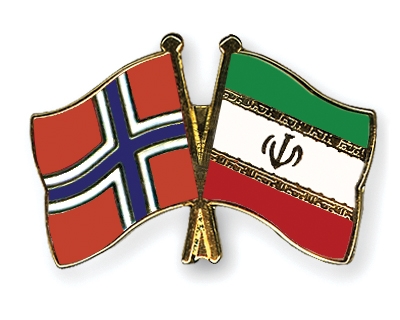
Paal Bjelke Andersen As you know, for the last three years, I have lived partly in Tehran where I have worked on a translation of Iranian contemporary poetry to Norwegian. Because Farsi is so different from the European languages I have dealt with before, and because the Iranian culture in the first place was so unfamiliar to me, I couldn't in the same degree lean on the alleged familiarity I feel towards texts in European languages. I will use some space on this, because I think it is adequate to our proclaimed "global" context.
I had only been twelve hours in Tehran before I was taken to my first reading, where I could not grasp anything except the very elaborate phonetic patterns in much of the Iranian poetry, both contemporary and traditional. At the rather soaked after-party we quickly ended up discussing the American L=A=N=G=U=A=G=E poetry. It turned out that a large group of Iranian poets named themselves as language poets. This group arose after the Revolution in 1979, in the mid-eighties. It had no direct relation to the American version, which were unknown to them at the time, but shared much of the same theoretical foundations and practice, albeit with equally strong roots in the Iranian tradition as in Western philosophy and literary theory. The next couple of weeks I attended several readings, and also did a reading myself, and every night had the same pattern: readings where I was allowed to interrupt with questions, trying to understand what the poem was about, how the semantic and phonetic patterns were distributed in the poems etc., followed by a discussion of Western poetry and theory. For example, one of the poets I met and who later became my main collaborator, Alireza Behnam, had recently translated the French poet Nathalie Quintane into Farsi, and I had come directly from the Audiatur festival in Bergen, where Nathalie had been a guest two years before. And all the evenings ended with a discussion of how our texts, even though we shared many of the theoretical and literary influences, came out so differently. In other words, what was it that this specific mixture of Western and Iranian tradition and contemporary Iranian conditions for writing, publishing and performing poetry was filtered through? To put it differently: what in the Iranian community were the poems responding to, and how? Of course I have never found any satisfactory answer to this. But I have anyway, because I have determined to make a book which tries to answer the question and make this tradition and these conditions legible to Norwegian readers, had to work specifically with possible solutions. My answer is context, i.e. introductory essays, poetics, linguistic analysis, phonetic transcriptions and audio files. Thus dissolving the essentialist notion of the poem at the expense of some floating, singular, an “incomplete” shapes, which the reader have to move through rather than put together.
Some of the texts we have translated could, if they were released in the U.S. or Europe, have qualified as conceptual, albeit a "weak conceptualism," to borrow Robert and Vanessa's expression. The thing is that the term "conceptual poetry" does not say much in an Iranian context. These are, rather, texts that can be read as a post-Iranian-language poetry that attempts to deal with internal Iranian aesthetic issues, and with the situation in Iran after the revolution in 1979 in general and after the election in 2009 specifically. My contention is that a proclaimed global conceptual poetry not necessarily can assimilate this poetry (in a movement unpleasantly reminiscent of the global capitalism's ability to subdue any expression and make it into a commodity). Any understanding of it must be primarily rooted in an understanding of the Iranian reality, the place where it is uttered (which of course is no unified country or culture, but rather the contrary, Iran is more complex than most, perhaps even all European countries). And that is precisely what makes this poetry interesting. What is it in the Iranian society that these poems respond to, and how?
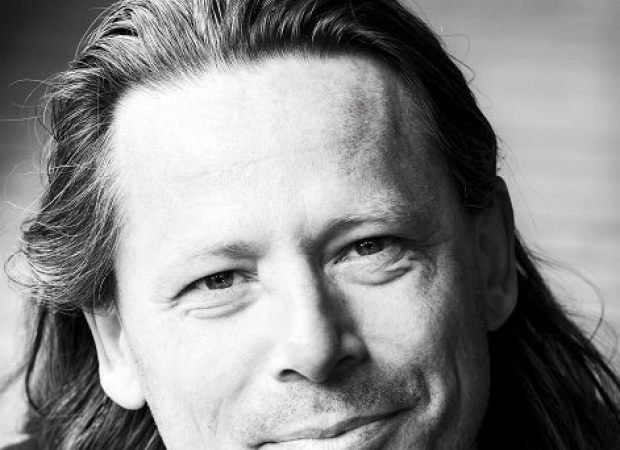
Paal Bjelke Andersen lives and work in Oslo, Norway. He runs Folkebiblioteket (The Public Library), a series of talks and readings at one of the public libraries in Oslo, the small press Forlaget Attåt and is part of the group running the poetry festival Audiatur (full documentation of the 2012 festival here). He's book The Grefsen Address can be downloaded from Eclipse and a reading in Norwegian and English at the Segue reading series is available from Pennsound
Marco Antonio Huerta Mexican translator and post-conceptual poet. During the summer of 2009 he decided to kill his own lyrical self. Part of his work has been published in the first international Conceptual Writing Journal Crux Desperationis 1, Luvina, and in Public Interest (LACE) in the Not Content section. Work in progress Magnitud/e (2012), in coauthorship with Sara Uribe, was recently translated to English by John Pluecker. His tweets can be read at @moteltampico.
http://www.ubu.com/concept/Crux_Conceptual-Journal_1_web.pdf
http://www.notcontent.lesfigues.com/2010/06/marco-huerto/
http://luvina.com.mx/foros/index.php?option=com_content&task=view&id=1018&Itemid=53
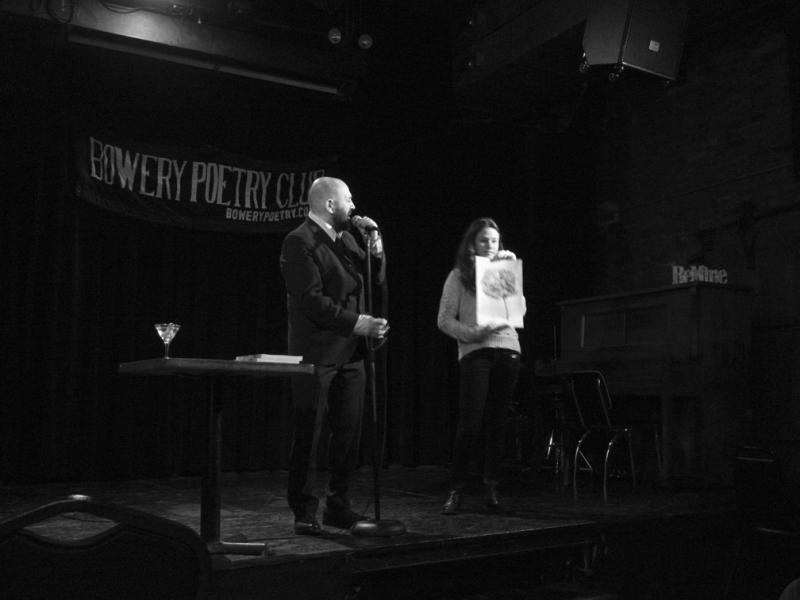
Rob Fitterman is in his office eating a salad that is, unfortunately, swimming in balsamic vinegar.
Global conceptualisms